Ancient Door In The Undercroft At Wells Cathedral
This ancient wooden door in the Undercroft at Wells Cathedral has been dated to 1265.

In medieval times, this entrance was the only way to the Undercroft since it was constructed to be a treasury housing the Cathedral’s treasures and valuable manuscripts.
Oxford Dendrochronology Laboratory gave the inner door a tree-felling date of c.1265.
The inner door opens inwards and consists of vertical planks strengthened by a ‘portcullis’ frame.
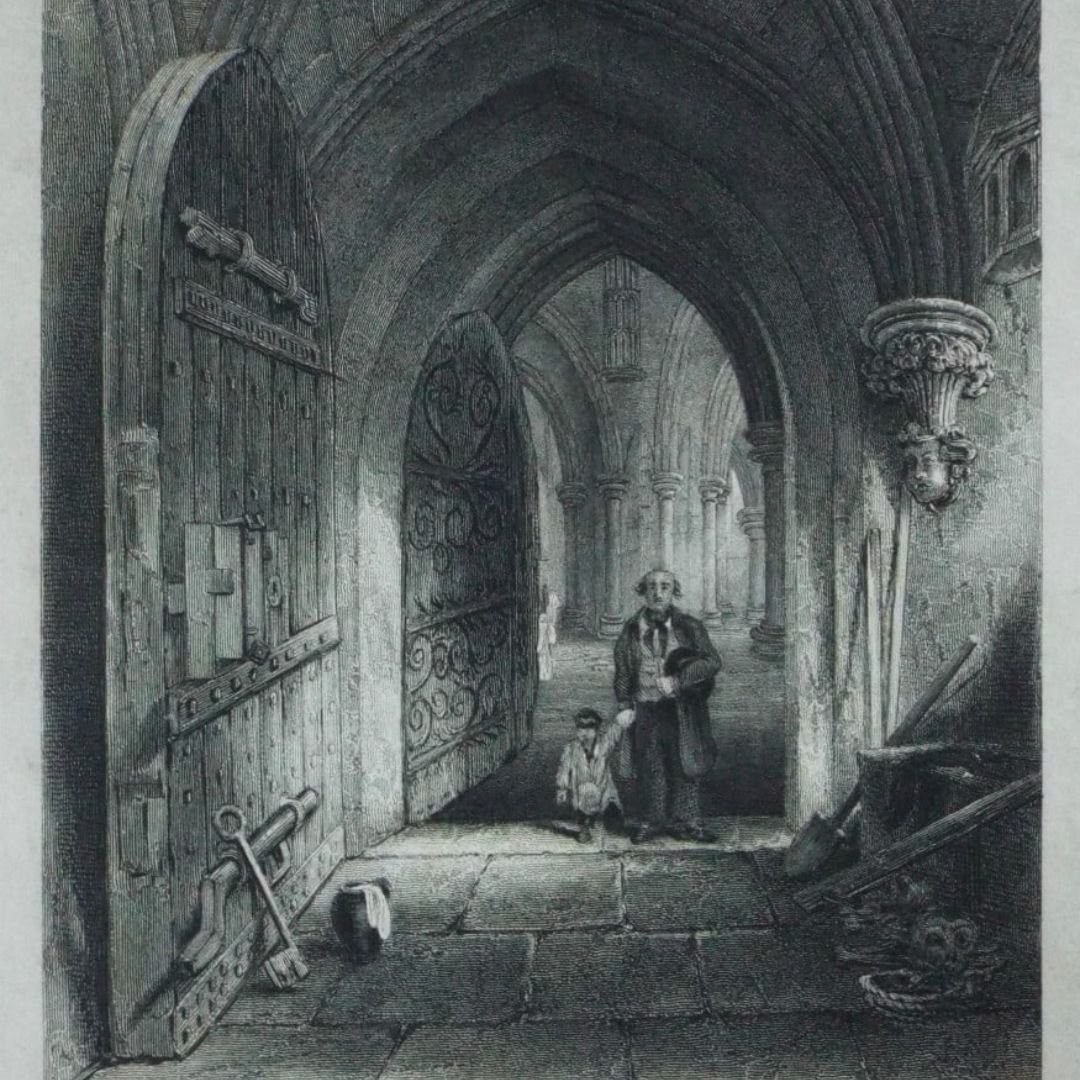
The intricate iron scrollwork with clusters of leaves, flowers and small birds — does not readily fit the wood, and may be recycled.
Above the door is a bolt hole, through which a huge bar could be dropped over the closed door at night.
The outer door is a few centuries younger (tree-felling date c.1450), fitted at a time when there were issues of security — there are several references to expenses on account of “the insurgents against peace of the church and the king”.
This door is even stronger by design, fitted with an impressive lock and bolting system, as well as vertical planks on one side and horizontal planks on the other.
Today, the outer door is kept permanently shut as the sacristy is on the side of it. Visitors can still admire the view of both via the Undercroft.
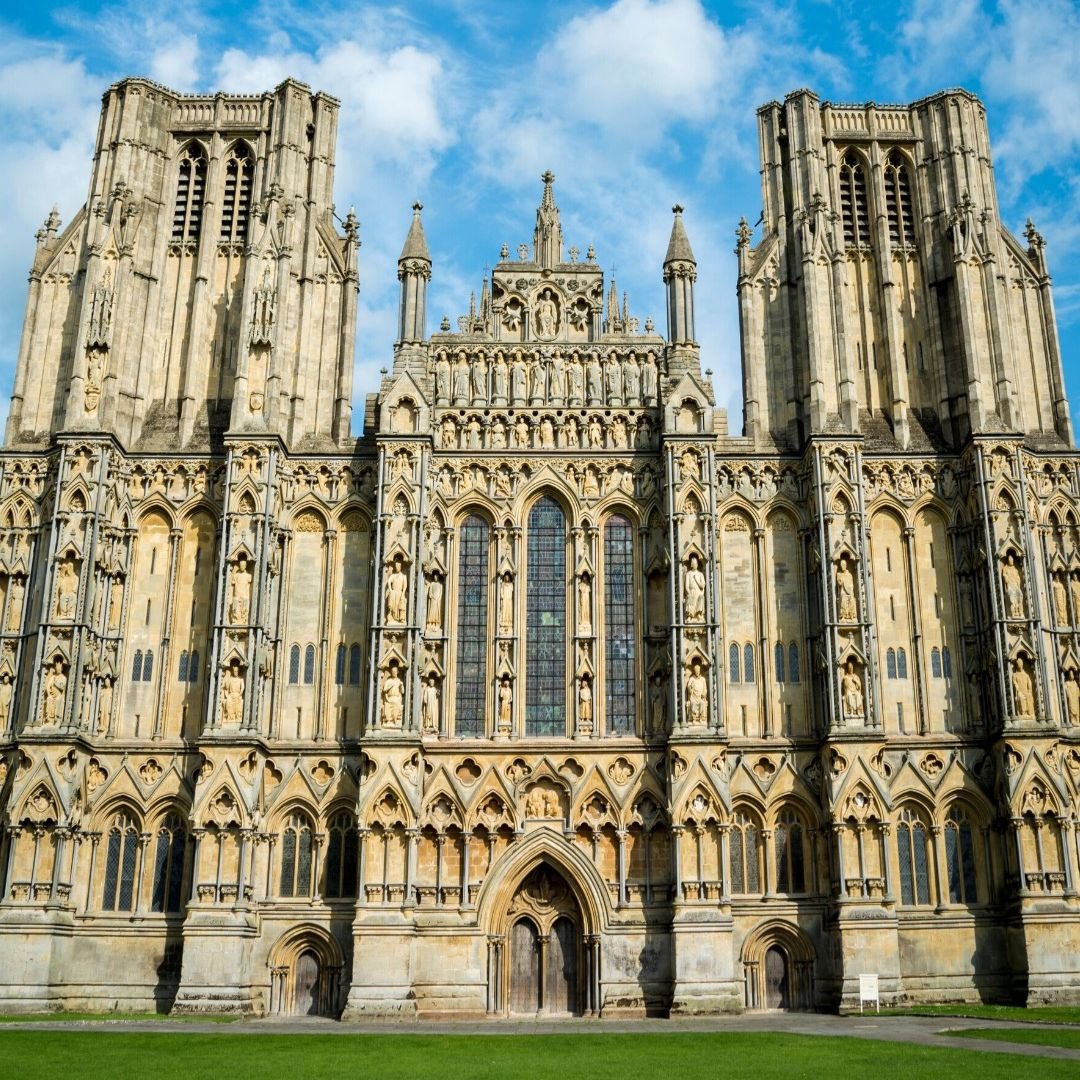
An undercroft is traditionally a cellar or storage room, often brick-lined and vaulted, and used for storage in buildings since medieval times.
In modern usage, an undercroft is generally a ground (street-level) area which is relatively open to the sides, but covered by the building above.
The Undercroft and chapter house at Wells Cathedral were built by unknown architects between 1275 and 1310.
It was designed in the Geometric style of Decorated Gothic architecture.
Today, it’s used as an exhibition space and it’s open to the public.
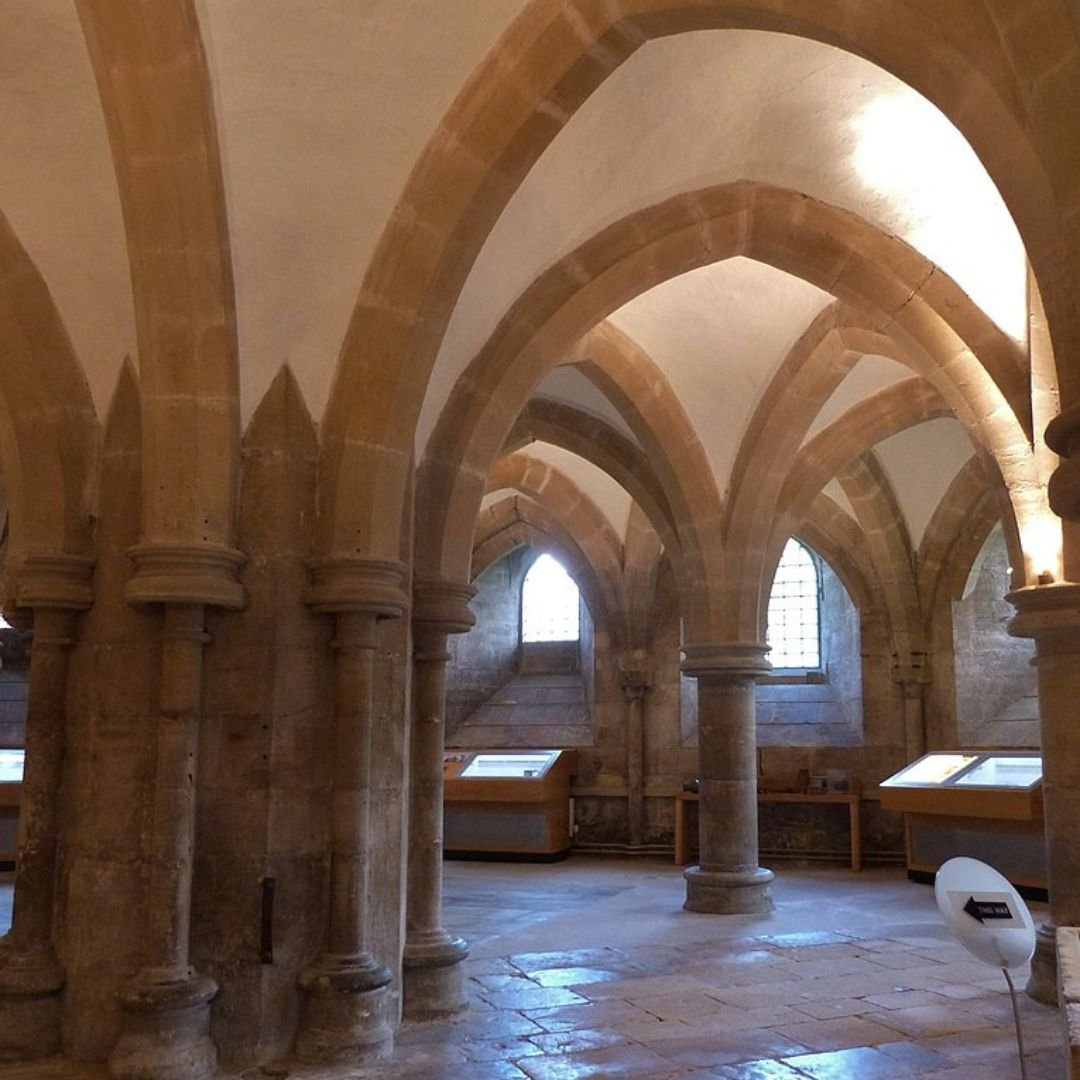
The cathedral itself is a magnificent example of English Gothic architecture and dates back to the 12th century.
Wells Cathedral has unique features that separate it from other English cathedrals.
This includes its iconic West Front and the beautiful ‘scissor arches’ supporting the central tower, as well as one of the largest collections of historic stained glass in the country.
The Cathedral also boasts the famous Wells Clock, which is considered to be the second oldest clock mechanism in Great Britain.
It also houses the fascinating octagonal Chapter House and one of only four chained libraries in the UK, pictured below.
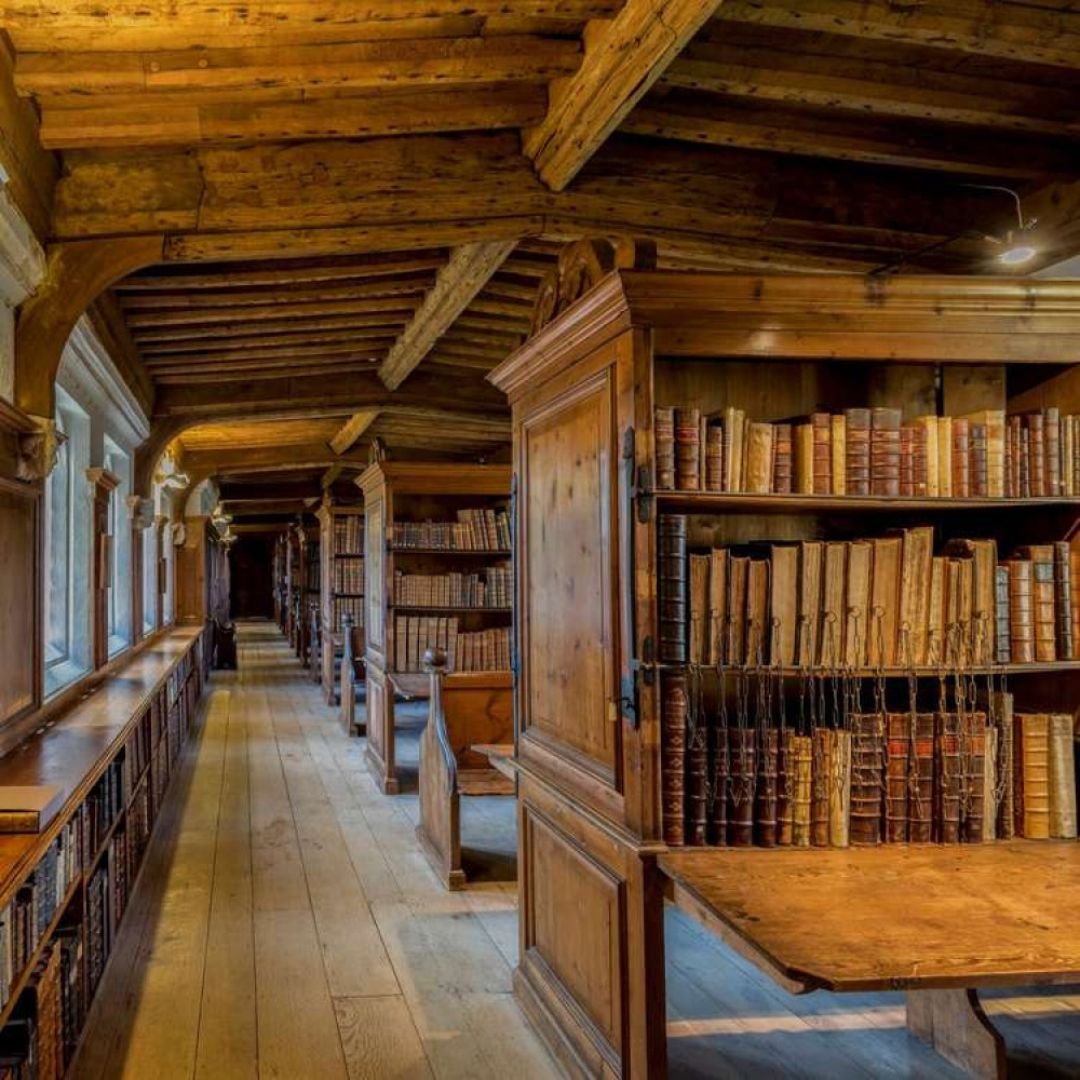
Wells Cathedral welcomes thousands of visitors each year who join in with regular daily services and events or who come simply to enjoy the calm and hospitality of this wonderful and holy place.
Stay, if you can, for Evensong with the Cathedral’s world renowned choir (term times); a peaceful and moving end to your day.
Free daily tours of the Cathedral are available all year except Sundays.
Someone who recently visited the cathedral said: “This place is just absolutely phenomenal, the history and the architecture combined makes for a perfect, interesting wonder around while stopping in Wells.
”The staff are so friendly, a donation to get in and it is *so* worth it. The library our favourite, it was totally fascinating with the chains and books over 1,000 years old.
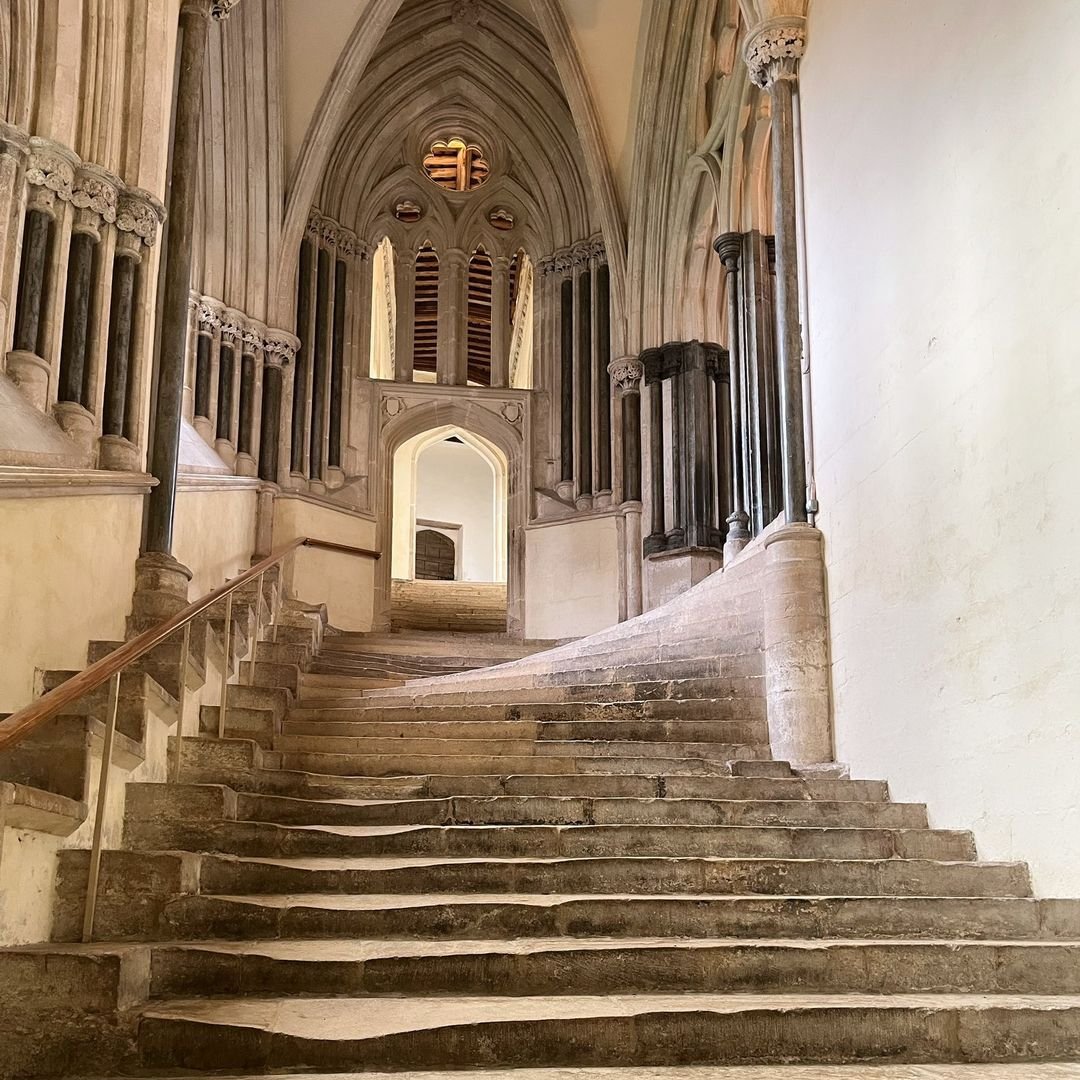
“Such a peaceful, tranquil place, I would totally recommend visiting Wells Cathedral.”
Another person added: “As soon as we saw the building we were very impressed. We came in from the side by Vicars Close. As we got to the front, it looked even better.
”We saw what we thought was around 50 sculpted figures. Upon reading info later on, we learned that there were 300 figures.”
Adjoining the Cathedral is Vicars’ Close, believed to be the only complete medieval street left in England.
This significant landmark was designed to provide communal accommodation for the Vicars Choral, who sang daily worship within the Cathedral.
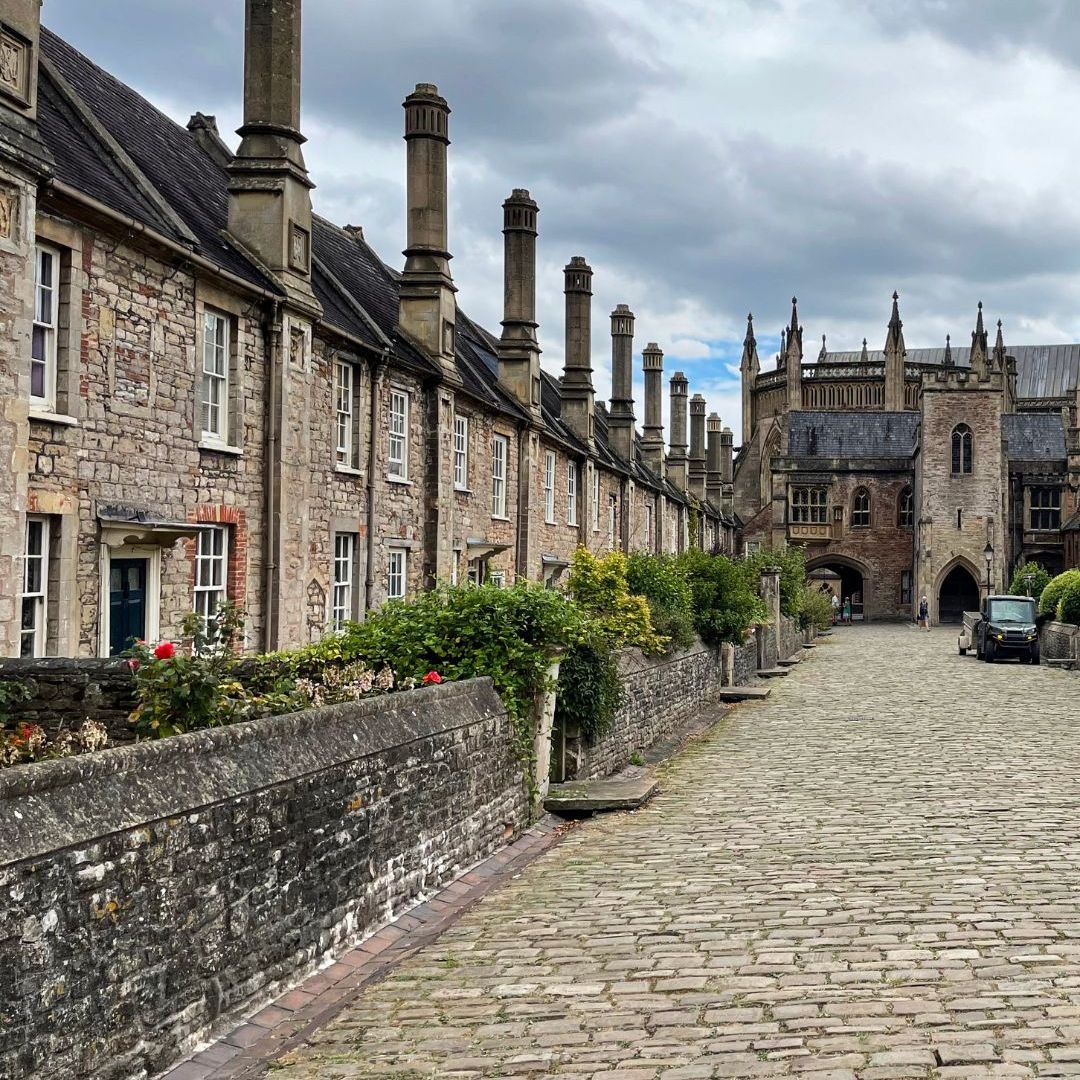
This centuries-old tradition continues today and is a unique and much valued part of life at Wells Cathedral.
The houses of the close were built in the 14th century under direction from Bishop Ralph of Shrewsbury and the iconic chimneys were added in the 15th century.
Originally 42 houses were built (one per vicar), but some were combined following the Reformation when vicars were allowed to marry.
Today, the Close comprises 27 residences, a chapel, library, treasury and muniment room. There is also a dining hall connected to the Cathedral by a covered walkway, the Chain Gate Bridge.
Reflecting the Close’s significance, all its buildings are Grade I listed.
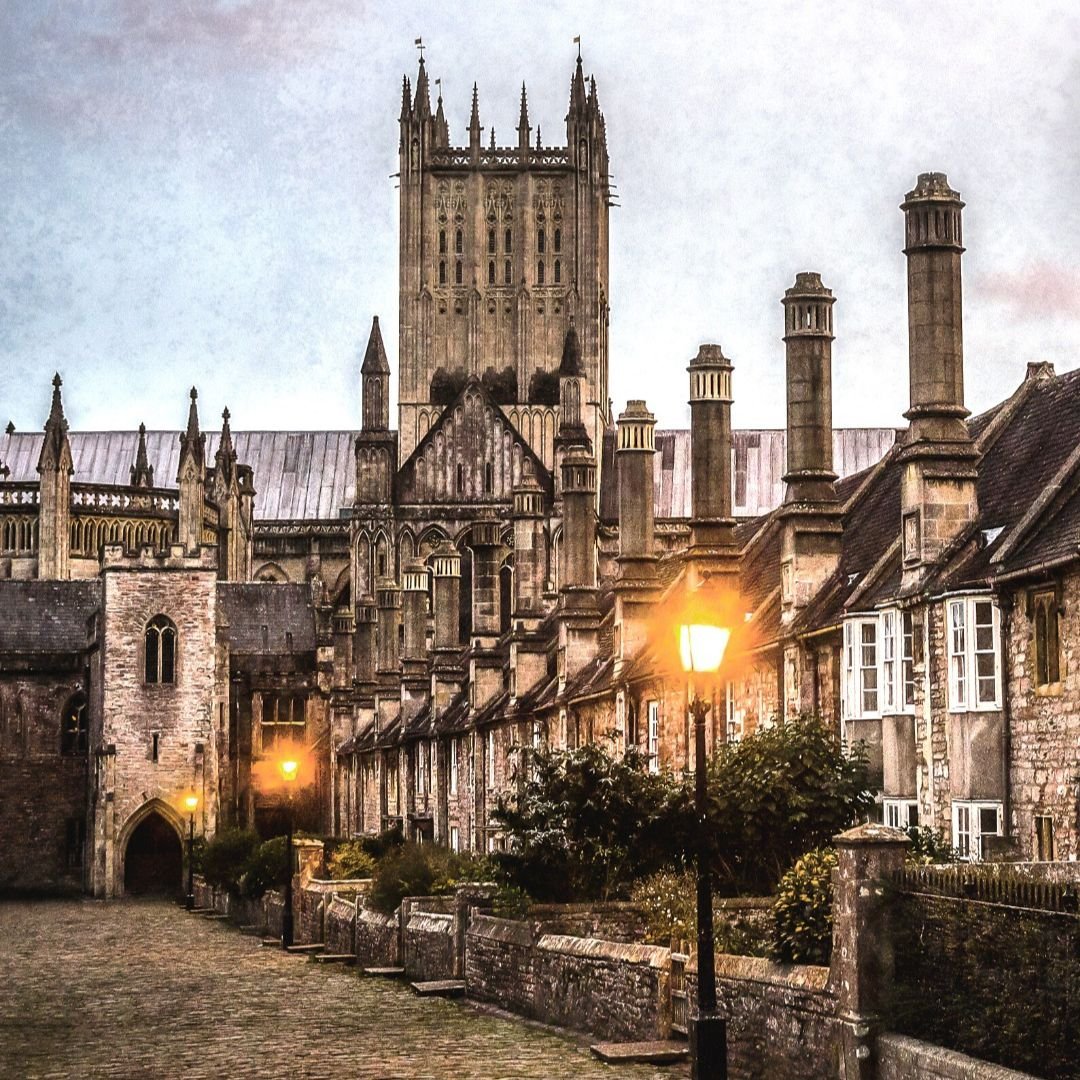
The current occupants still include all twelve men of the Vicars Choral, plus the organists and virgers.
Vicars Choral have remained at the heart of life at Wells Cathedral since the 1100s and are now recognised as a world-class choir.
The city of Wells itself has a charming and picturesque centre with cobbled streets, historic buildings, and a market square.
Wells is surrounded by the beautiful Somerset countryside, making it a popular destination for tourists exploring the region.
Related Post
A shocking documentary proves that mermaids do exist
SHOCKING Revelation: Thuya, Mother of Queen Tiye, Was the Grandmother of Akhenaten and Tutankhamun—What Ancient Egyptian Secrets Did She Leave Behind?
Breaking News: Astonishing Discoveries at Karahan Tepe Confirm an Extraterrestrial Civilization is Hiding on Earth, and NO ONE Knows!
Breaking News: Researchers FINALLY Discover U.S. Navy Flight 19 After 75 Years Lost in the Bermuda Triangle!
NASA’s Secret Investigation: Uncovering the Astonishing Mystery of the UFO Crash on the Mountain!
Explosive UFO Docs LEAKED: Startling Proof That Aliens Ruled Ancient Egypt!